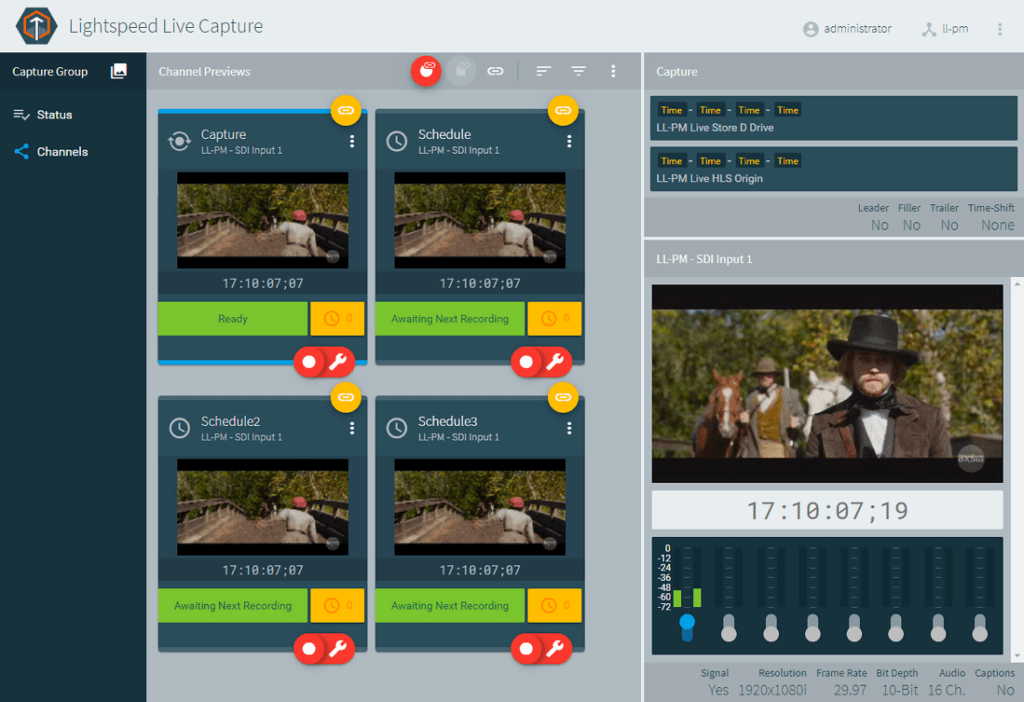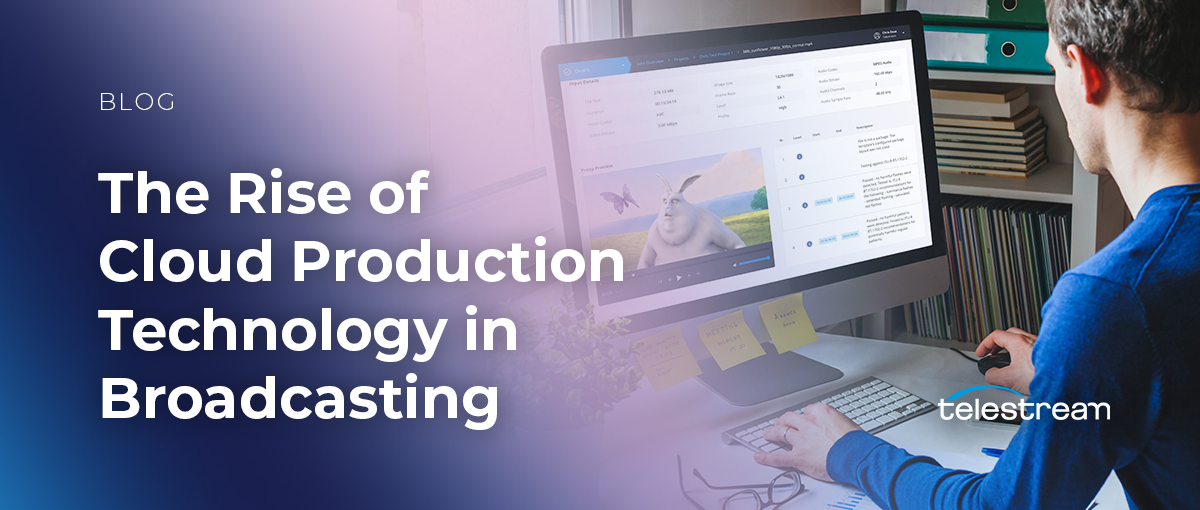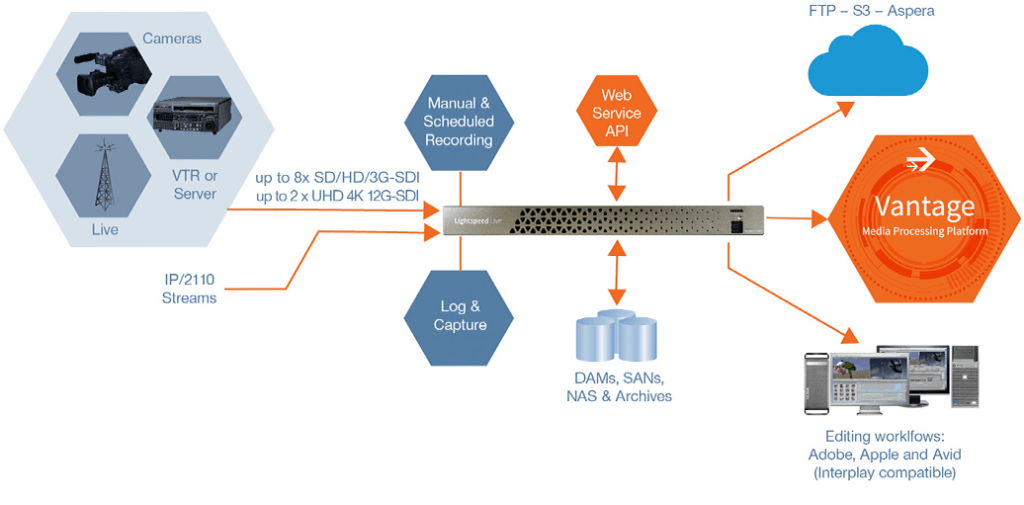Broadcasters have been using on-premises content production tools for decades now, remaining hesitant about using cloud production technology. The historical concerns around cybersecurity and total cost of ownership are quickly fading as modern cloud solutions rapidly transform the world of broadcasting. These solutions are quickly becoming top-of-mind as content creators look to create more efficient, scalable, and collaborative workflows.
The increasing integration of cloud production technology in broadcast workflows isn’t without its share of hurdles and challenges. In this blog, we will outline and provide solutions to those roadblocks while enumerating the many benefits cloud production technology can have for broadcast productions.
Using Cloud Production Technology in Broadcast Workflows
We stand at the forefront of a major shift in the broadcasting industry, with broadcasters increasingly turning to cloud production technology solutions. While some companies still rely on on-premises infrastructure, hybrid cloud and on-prem ecosystems are becoming more common. A few years ago, this concept of hybrid on-prem and cloud production technology was just starting to take hold within broadcast circles. Many simply leveraged these solutions for the scalability and remote collaboration capabilities that the cloud has to offer.
Fortunately, hefty investments in legacy equipment, such as studios or private servers, do not necessarily represent roadblocks for content creators looking to move to cloud-based (or cloud-friendly) production workflows. The versatility and adaptability of cloud technology enable valuable, effective integrations for on-prem systems into a cloud environment.
Overcoming Production Bottlenecks with Cloud Broadcast Technology
Cloud production technology offers a myriad of advantages that help overcome traditional roadblocks and challenges. For one, it enables significant increases in production scale. These cloud solutions put the onus of building and maintaining the ecosystem on the cloud provider, allowing broadcasters to expand their content offerings without wasting time or money worrying about physical infrastructure. Content providers can, instead, focus their efforts on building the premium quality content their audiences expect.
Cloud solutions also facilitate remote production and collaboration. By leveraging cloud-based tools, teams can work together from any location and break free from geographical barriers. This enhances collaboration and enables companies to tap into global talent pools, expanding their creative possibilities without compromising on productivity or efficiency.
What’s more, cloud technology can radically streamline production workflows. Tedious and repetitive tasks can be automated, freeing up valuable time for content creators to focus on more creative aspects of their work. For example, cloud content management solutions can provide automated metadata tagging and indexing so that media is stored in the most appropriate format on the most cost-effective storage system for its stage in the production lifecycle. This increases productivity, optimizes costs, and improves overall workflow management.
Common Roadblocks to Cloud Technology Adoption
Some companies may still harbor concerns that prevent them from investing in cloud production solutions. The most common roadblocks stem from the traditional practices used in the industry over the years. Overcoming these roadblocks requires key stakeholders to become familiarized with new workflows and tools, which can seem like a considerable task. As with any new technology, shifting to cloud-based workflows will require new skillsets and training for staff members with expertise in traditional on-prem tools.
Plus, moving from a physical, on-premises solution to an intangible cloud system can be a significant adjustment. However, a detailed and well-thought-out strategy for adopting and implementing cloud solutions where it makes sense for a given broadcast organization can easily assuage these concerns.
For some inspiration, here is a blog post that highlights 3 ways Telestream’s media creation and production solutions enable intelligent content production workflows.
Top 3 Benefits of Cloud Production Technology for Broadcasting
Cost reduction is one key advantage of using cloud broadcast production technology. Historically, concerns about the cloud being ‘too expensive’ were due to single-vendor lock-in approaches. Fortunately, more modern cloud providers are embracing interoperability, significantly improving cost structures. Moving to a public or private cloud can help organizations reduce spending on physical infrastructure and allocate those resources to supporting broadcast productions. This flexibility results in more efficient use of financial resources and manpower, yielding higher-quality content and improved production value.
Another notable benefit is the acceleration of innovation. Cloud technology enables experimentation and innovation at a high velocity, without incurring substantial costs. The cloud’s scalability and flexibility provide an ideal environment for trying out new ideas, iterating quickly, and refining processes. Those who take full advantage will be able to create intelligent, well-designed, efficient production workflows. Broadcasters and producers can then run critical processes in parallel without overtaxing physical resources. They can also incorporate Artificial Intelligence (AI) and Machine Learning (ML) services beyond the typical usage of data analytics and business insights. AI and ML tools can enhance content analysis and metadata indexing, automate subtitling and captioning, streamline post production editing, and so much more.
Third, cloud broadcast production technology enables remote collaboration and improves staffing efficiency. Broadcasters can match the natural ebb and flow of production cycles by seamlessly scaling operations based on demand. They can also enable collaborators who aren’t on location to access on-prem systems through cloud integrations. During peak periods, additional resources can be quickly provisioned. On the flip side, during quieter periods, costs can be optimized by scaling down. This adaptability allows for more efficient staffing and ensures optimal resource allocation throughout the production lifecycle. Leveraging these tools can maximize flexibility and collaboration, enabling more efficient broadcast operations.
Picking the Right Cloud Production Tools for Your Workflow
Cloud technology is revolutionizing broadcast production workflows, enabling scalability, remote collaboration, and workflow automation. With a shift in perspective, you’ll uncover the remarkable benefits that make the transition to the cloud a no brainer: from cost savings, to accelerated innovation, efficient resource allocation, and more. With many high-end cloud production tools on the market, broadcasters can embrace cloud technology and streamline production processes to stay ahead. Read this recent interview given by Dave Norman in TVTech about cloud technology solutions for broadcasting and production.

One solution in the cloud-based broadcast production space is the Lightspeed Live Capture solution. With the power of the cloud, Lightspeed Live Capture reduces points of friction in both live and file-based workflows. It’s an ideal tool for content creators looking to embrace cloud technology while maintaining the advantages of existing infrastructure. When coupled with other cloud-native and cloud-friendly media creation and production solutions, broadcasters can create powerful, optimized content operations that stand the test of time. Learn more at www.telestream.net.
Lightspeed Live Capture is nominated for two 2023 Streaming Media Reader’s Choice Awards: Single or Dual-Stream Encoding Hardware and Encoding Hardware for Live Production. Vote for Lightspeed Live Capture in both categories before the voting window closes!





